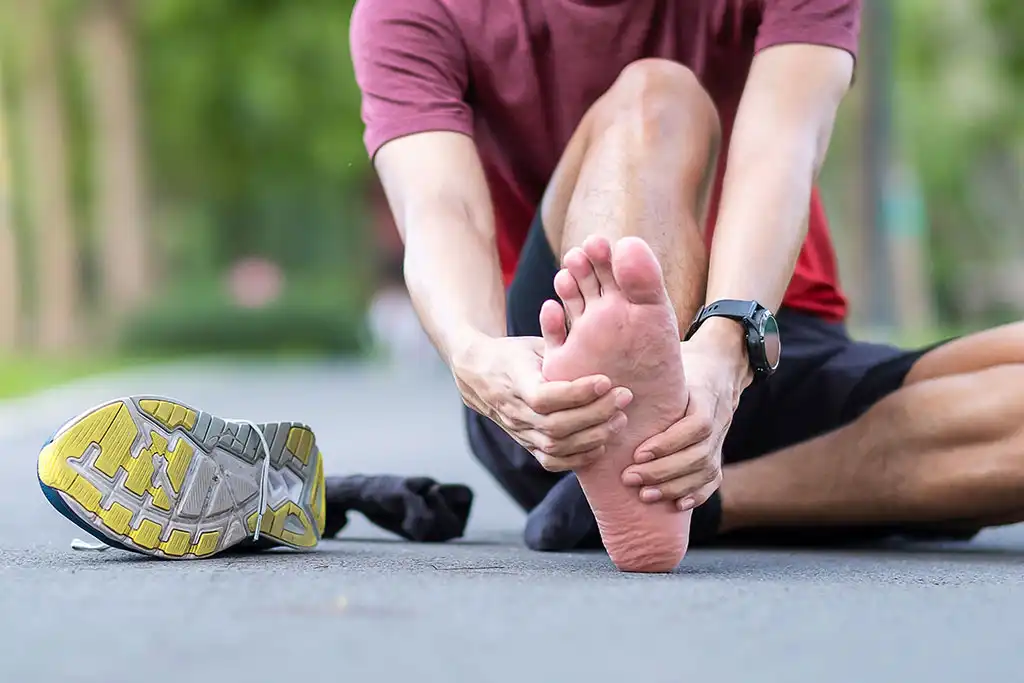As a physical therapist, I often encounter runners seeking relief from foot pain or discomfort, and orthotics frequently come up as a potential solution. While orthotics can offer valuable short-term relief, it’s essential to understand their role in the broader context of foot health and running biomechanics. Think of orthotics as a temporary support, much like a shoulder sling used during the healing process—meant for support while recovering, but not intended for permanent use.
Orthotics: A Short-Term Solution
Orthotics are designed to alleviate stress on the tissues by providing support and cushioning. For runners, this means temporary relief from discomfort and a chance for the injured tissues to heal. However, it’s crucial to recognize that orthotics should not be seen as a long-term solution. Just as we wouldn’t wear a shoulder sling indefinitely, we shouldn’t rely on orthotics for the long haul.
Orthotics can be beneficial for managing acute issues, but over time, relying on them can lead to other problems. They are intended to support the healing process rather than replacing the natural function of your foot.
The Plantar Fascia and Foot Dynamics
Most orthotics are designed to support the plantar fascia, a thick band of tissue running along the bottom of the foot. While it’s true that many inserts posture the plantar fascia, it’s essential to remember that the plantar fascia is meant to provide dynamic stability. It should naturally lengthen and shorten with each step, allowing for flexibility and adaptability.
Orthotics often attempt to control the foot’s movements too rigidly, which can inhibit the natural function of the plantar fascia. The result is a foot that relies too heavily on external support, potentially leading to other issues.

The Impact on the Foot’s Natural Mechanics
Many orthotics restrict the calcaneus (heel bone) from its natural inward rotation, which is crucial for the foot’s dynamic function. This restriction can lead to rigidity in the foot, forcing the body to compensate by transferring the motion to other areas, such as the knee. This can create a ripple effect of biomechanical issues, leading to discomfort or injury in the knee or even the hips.
By restricting natural foot movements, orthotics can inadvertently create additional problems rather than solving the underlying issues. It’s important to focus on addressing the root causes of foot pain rather than solely relying on orthotics for relief.
A Balanced Approach
To achieve long-term relief and maintain optimal foot health, it’s essential to address the root causes of discomfort. This includes:
- Strengthening Exercises: Targeting the muscles of the foot and lower leg to improve support and stability.
- Flexibility Training: Ensuring the plantar fascia and surrounding tissues remain flexible and functional.
- Proper Footwear: Choosing shoes that offer the right support and fit for your specific needs.
Orthotics can be a valuable tool for short-term relief, but they should be used as part of a broader strategy for managing foot health. By focusing on strengthening, flexibility, and appropriate footwear, you can address the underlying issues and reduce your dependence on orthotics over time.
If you’re experiencing foot pain or discomfort while running, consider consulting with a physical therapist to develop a comprehensive plan that addresses your specific needs and helps you return to your best performance.
About the Author

Jackie Sanders is a licensed Physical Therapist. She graduated from Wright State University with a Bachelor’s Degree in Exercise Biology. She then earned her Doctorate in Physical Therapy from the University of Cincinnati. In addition to being a physical therapist, Jackie is also a Certified Running Coach, with a special interest in video gait analysis. Her favorite part of physical therapy is working with patients to find creative solutions to meet their goals. She is passionate about treating patients holistically and determining the root cause of their impairments.


